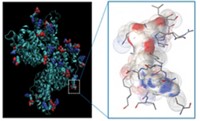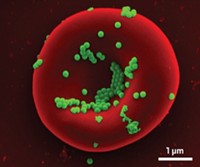Advertisement
Grab your lab coat. Let's get started
Welcome!
Welcome!
Create an account below to get 6 C&EN articles per month, receive newsletters and more - all free.
It seems this is your first time logging in online. Please enter the following information to continue.
As an ACS member you automatically get access to this site. All we need is few more details to create your reading experience.
Not you? Sign in with a different account.
Not you? Sign in with a different account.
ERROR 1
ERROR 1
ERROR 2
ERROR 2
ERROR 2
ERROR 2
ERROR 2
Password and Confirm password must match.
If you have an ACS member number, please enter it here so we can link this account to your membership. (optional)
ERROR 2
ACS values your privacy. By submitting your information, you are gaining access to C&EN and subscribing to our weekly newsletter. We use the information you provide to make your reading experience better, and we will never sell your data to third party members.
Biological Chemistry
Lipoprotein Nanoparticles Boost Memory In Mice With Alzheimer’s
Nanomedicine: Particles that resemble high-density lipoprotein clear out clumps of amyloid-β
by Erika Gebel Berg
March 5, 2014

Nanoparticles designed to act like lipoproteins can clear out the tangled protein deposits found in the brains of mice with a model of Alzheimer’s disease. Researchers report that four weeks of injections of the particles significantly improves memory in the animals, suggesting the particles could be a novel treatment strategy for the illness (ACS Nano 2014, DOI: 10.1021/nn4058215).
The hallmarks of Alzheimer’s disease are clumps of amyloid-β protein in the brain. Recent evidence suggests that the cause of Alzheimer’s disease may be the body’s inability to clear the aggregates. High-density lipoprotein (HDL), which carries so-called good cholesterol around the body, binds to amyloid-β, and researchers suspect it helps to clear the clumping protein. In fact, Alzheimer’s disease patients tend to have low levels of HDL, says Xiaoling Gao of Shanghai Jiao Tong University.
Natural HDL consists of a lipid vesicle studded with proteins that help guide the particles to their targets, such as cell surface receptors that mediate cholesterol uptake. People with specific mutations in the gene for one of the proteins called apolipoprotein E (ApoE) are at increased risk for developing Alzheimer’s disease, suggesting the protein plays a role in HDL’s ability to bind or clear amyloid-β. This gave Gao the idea to battle Alzheimer’s with a synthetic version of HDL that contains only ApoE3, a subtype that binds amyloid-β super tightly.
To produce the ApoE3-HDL particles, Gao’s team formed lipid vesicles with 1,2-dimyristoyl-sn-glycero-3-phosphocholine and then mixed the particles with ApoE3. Using surface plasmon resonance measurements, the researchers determined the particles had a strong affinity for amyloid-β.
Next, they labeled the particles with radioactive iodine and injected them into mice to assess whether the particles could penetrate the blood-brain barrier, a critical factor for any Alzheimer’s medication. After an hour, the researchers observed that 0.4% of the injected dose had entered the rodents’ brains, suggesting the particles could indeed breach the barrier.
To test the particles’ effects, the researchers gave mice with a model of Alzheimer’s disease daily injections of either saline or 5 mg of ApoE3-HDL per kilogram of body weight for four weeks. They tested the agent’s effect on memory by putting the mice in a 120-cm-wide circular pool with a single platform. After the mice found the platform once, the researchers timed how long it took the mice to find it again. Mice that received the HDL treatment spent about 30% of their time in the pool quadrant containing the platform, a sign they remembered the platform’s location, while those that received saline swam in the correct quadrant only 10% of the time. When the team analyzed slices of the animals’ brains, they found that the nanoparticle treatment reduced amyloid-β deposits by 40% in the cortex and 64% in the hippocampus.
The study is an elaborate and elegant proof-of-concept for a new Alzheimer’s treatment strategy, says Andras G. Lacko of the University of North Texas Health Science Center. However, he adds that to be a viable Alzheimer’s therapy, the researchers must improve the particles’ ability to penetrate the blood-brain barrier.
Gao agrees that there is room for improvement. In future experiments, Gao plans to fill the HDL particles with Alzheimer’s drugs to produce a combination therapy.





Join the conversation
Contact the reporter
Submit a Letter to the Editor for publication
Engage with us on Twitter